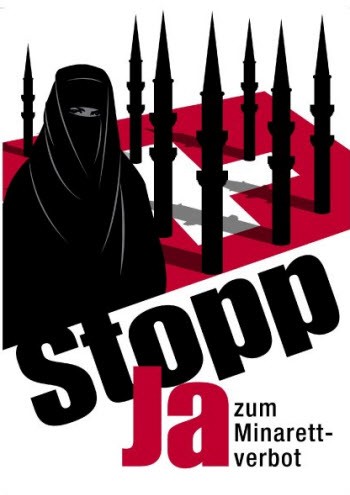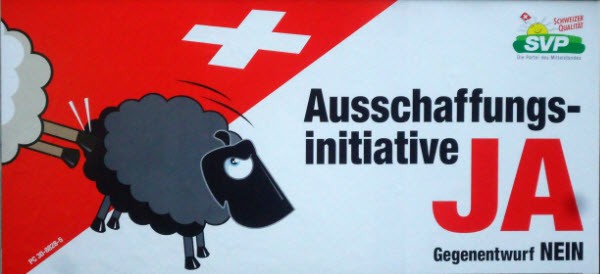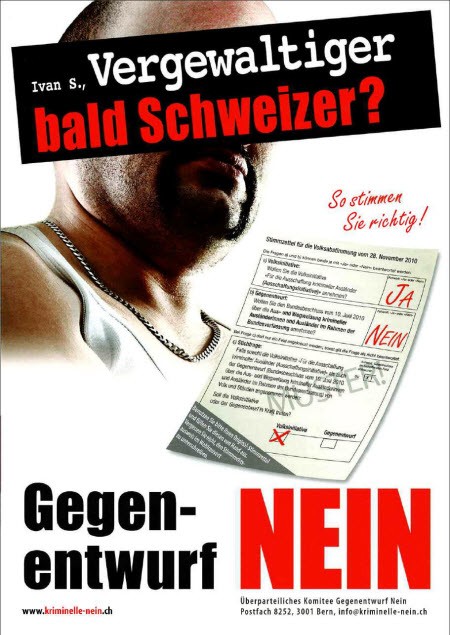Freelance writer Troy Wilkinson writes: As one of a sizable percentage of foreign citizens living in Switzerland, I’m pretty far removed from the machinations of the country’s direct democracy. That being said, even to me it is still evident that, especially when compared to Australia, referendums form a central feature of the Swiss political landscape.
 Three to four times each year the full spectrum of political parties trundle out clusters of posters in public areas in order to persuade the citizenry to make their voice heard at the upcoming polls according to each party’s wishes, in what could best be described as the Swiss equivalent of a ‘How to Vote’ card. The issues up for popular voting can either be applicable to a federal, canton (equivalent to state) or local level, and if they pertain to minor proposals within education, health or taxation, the party posters are quite likely to be a simple encouragement to either vote ‘Yes’ or ‘No’.
Three to four times each year the full spectrum of political parties trundle out clusters of posters in public areas in order to persuade the citizenry to make their voice heard at the upcoming polls according to each party’s wishes, in what could best be described as the Swiss equivalent of a ‘How to Vote’ card. The issues up for popular voting can either be applicable to a federal, canton (equivalent to state) or local level, and if they pertain to minor proposals within education, health or taxation, the party posters are quite likely to be a simple encouragement to either vote ‘Yes’ or ‘No’.
But when it comes to contentious issues, particularly at a national level, the posters go straight for the patriotic jugular. Parties’ messages will be splashed across major billboards and the graphic design work gets a lot more emotive. Forget “be alert, not alarmed”, if it could be at all perceived that the Swiss way of life might be in danger from outsiders, the parties on the fringe symbolically use the white cross on red of the Swiss flag in a wholehearted attempt to set alarm bells ringing in the heads of the electorate.
My personal favourite came before a referendum in late 2005, when voters were to decide whether Switzerland should join the Schengen Agreement, the European treaty on open borders. I don’t ever recall knowing which political party produced this particular poster, but it was the first attempt I’d seen at blatant scaremongering.
The Swiss flag had been rendered as a classic cartoon circle of tightly bound red sticks of dynamite, the fuse led away to a detonator box emblazoned with the blue background and yellow stars of the European Union, while a crazed cartoon man with unkempt hair and wild eyes gleefully jumped up and plunged down the detonator lever. Evidently the majority of Swiss voters found this as comical as I did, as they duly elected to join Norway as the second non-European Union member to become part of the Schengen Area.
Though it’s not just the European Union (or their cronies in Brussels) who have been demonised. On other issues particular sections of the community within Switzerland itself have been targeted, and it is the Swiss People’s Party, one of four parties in a grand coalition that makes up the federal government, which has been the primary antagonist.
For a referendum in November 2009 they produced a poster depicting a fully covered Muslim woman in the foreground, while behind her, a cluster of minarets that looked deceptively like missiles ready for launch were arrayed on a Swiss flag. This was an attempt at encouraging voters to install a nationwide ban on the construction of minarets for all new mosques. The design sparked outrage for its thinly veiled swipe at Switzerland’s Turkish community and was eventually withdrawn from display in half a dozen cities, but by then the impact had already been made and at the popular vote the minaret ban was passed.
But for the Swiss People’s Party generating controversy could hardly be labeled a one-off. A similar furore was created back at the 2007 general election, when their billboard campaign carried the banner “For Greater Security”. Two cutesy, comic strip style white sheep stood in a Swiss flag paddock, while a third used its rear legs to kick out a solitary black sheep from the flag area. That too was removed from billboards before the election due to the negative reaction it received, and I assumed that that was the end of the illustration.
Not so. In the lead-up to a referendum late last year the same design made a comeback, albeit in a slightly trimmed down version. The two standing white sheep were gone, as was the front half of the third, but the core of the party’s message remained: The black sheep was ousted from the Swiss paddock by a pair of white hind legs.
The sheep had returned in support of a new proposed law that would automatically deport non-Swiss citizens convicted of a pre-defined list of crimes without right of appeal. To complement the sheep, four further posters were released by the Swiss People’s Party. Each contained the photo of a real man’s face, three of whom obviously not ethnically northern European, with one of the following pieces of text partially obscuring their faces:
“Ivan S., rapist, soon to be Swiss?”
“Faruk B., murderer, soon to be Swiss?”
“Ismir K., welfare cheat, soon to be Swiss?”
“Detlef S., child abuser, soon to be Swiss?”
This proposal also passed nationwide, with the Italian speaking canton siding with the generally more conservative German cantons voting in favour, while the typically more liberal French speaking cantons voted against. Though despite passing the public ballot, the deportation proposal may yet fail to be enacted into law on the grounds that it is contrary to the Swiss constitution.
What appears next in the streets on the agenda concerning foreign residents, some of whom have even been born and spent their whole lives in Switzerland but will never make it past the stringent requirements for citizenship, remains to be seen in upcoming referendums. But one thing at the very least appears clear. The self-proclaimed white sheep are not ready to lie down in their red pastures quite yet.
You can read more of Troy at his blog Troy’s Gone Walkabout.









Crikey is committed to hosting lively discussions. Help us keep the conversation useful, interesting and welcoming. We aim to publish comments quickly in the interest of promoting robust conversation, but we’re a small team and we deploy filters to protect against legal risk. Occasionally your comment may be held up while we review, but we’re working as fast as we can to keep the conversation rolling.
The Crikey comment section is members-only content. Please subscribe to leave a comment.
The Crikey comment section is members-only content. Please login to leave a comment.